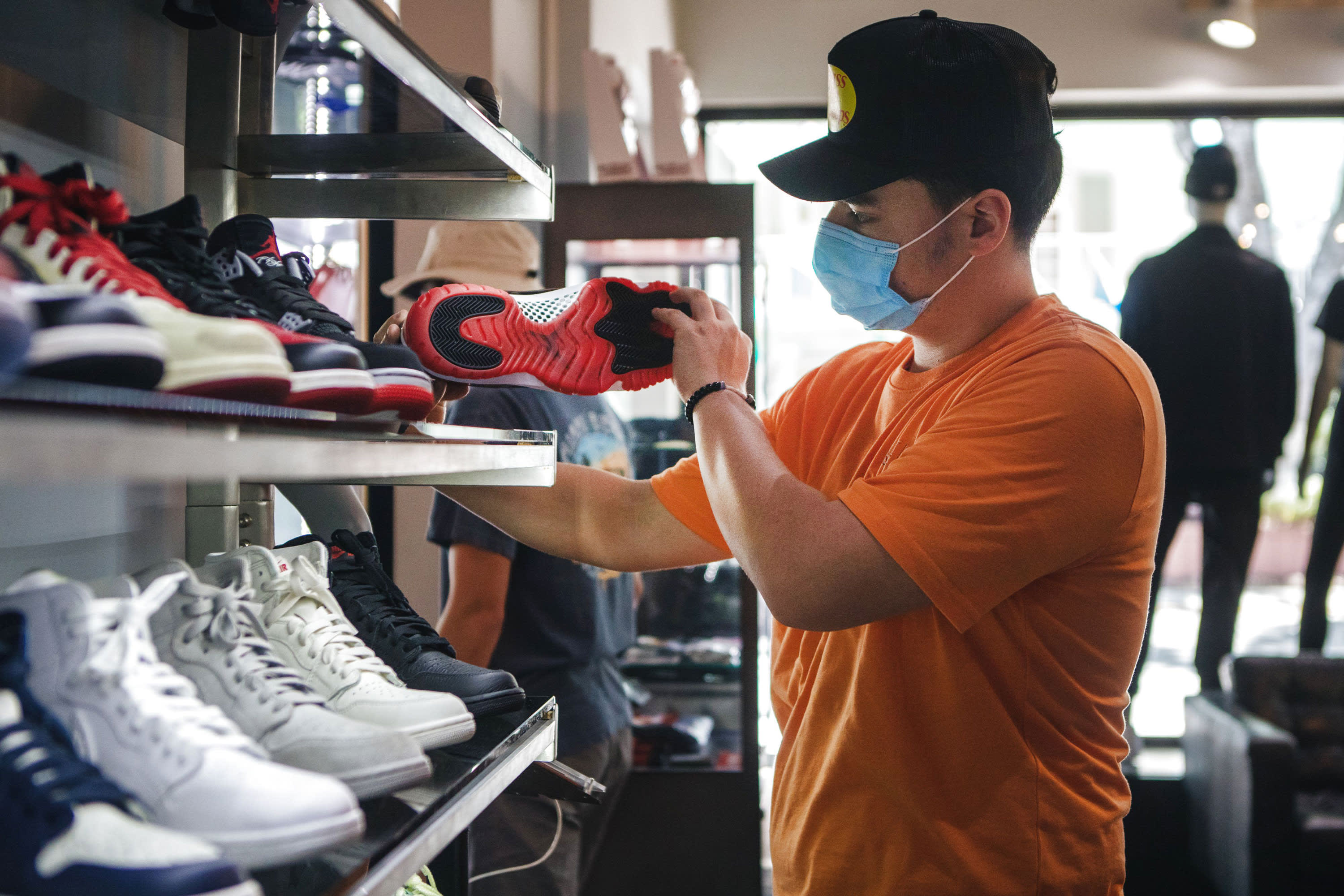Retail sales explode in March as consumers use stimulus checks to spend heavily

A fresh batch of stimulus checks sent consumer purchases surging in March as the U.S. economy continued to get juice from aggressive congressional spending.
Retail sales rose 9.8% for the month, the Commerce Department reported Thursday. That compared to the Dow Jones estimate of a 6.1% gain and a decline of 2.7% in February.
Sporting goods, clothing and food and beverage led the gains in spending and contributed to the best month for retail since the May 2020 gain of 18.3%, which came after the first round of stimulus checks.
A separate report showed that first-time filings for unemployment insurance plunged, with the Labor Department reporting 576,000 new jobless claims for the week ended April 10. That was easily the lowest total since the early days of the Covid-19 pandemic and represented a sharp decline from the previous week’s total of 769,000.
The Dow Jones claims estimate was 710,000.
As the jobs picture brightened, consumers took their $1,400 stimulus checks and spent aggressively. The money came courtesy of the nearly $1.9 trillion American Rescue Plan Act that Congress passed in March.
The legislation took total stimulus and rescue payments approved in the year since the Covid-19 pandemic began to about $5 trillion, fueled by red ink that fiscal authorities say is necessary to keep the economy running.
Spending for the month was broad-based.
The critical bar and restaurant industry saw a 13.4% surge, thanks to the increasing relaxing of restrictions as Covid vaccines accelerate to a pace of more than 3 million a day.
Sporting goods spending was the highest percentage gainer at 23.5%, followed by clothing and accessories at 18.3% and motor vehicle parts and dealers at 15.1%.
March’s retail sales report was yet another sign that consumers overall remain healthy and willing to spend, even though increasing amounts of stimulus checks are going towards savings rather than spending.
A recent report from the New York Federal Reserve indicated that stimulus recipients expect to save 41.6% of their checks and spend 24.7%. Following the first round of checks in the spring of 2020, consumers saved 34.5% and spent 29.2%.
As the recovery has gained speed, consumers have had to deal with the strongest signs yet of inflationary pressures building. The consumer price index rose 2.6% in March from a year ago, thanks in part to a surge in gasoline prices. The year-over-year gain was the largest since August 2018.
Thursday’s economic data also showed more signs of a thawing in the labor market.
The plunge in jobless claims generated the lowest weekly number since March 14, 2020, just after the official pandemic declaration. Nearly two weeks later, weekly claims filings would top out at a staggering 6.15 million, easily the worst week in U.S. history.
Since then, the jobs market has improved dramatically, with the unemployment rate falling from a pandemic peak of 14.7% to its current 6%. The nonfarm payroll addition of 916,000 in March brought more hope that the healing is accelerating.
This is breaking news. Please check back here for updates.
Enjoyed this article?
For exclusive stock picks, investment ideas and CNBC global livestream
Sign up for CNBC Pro
Start your free trial now




